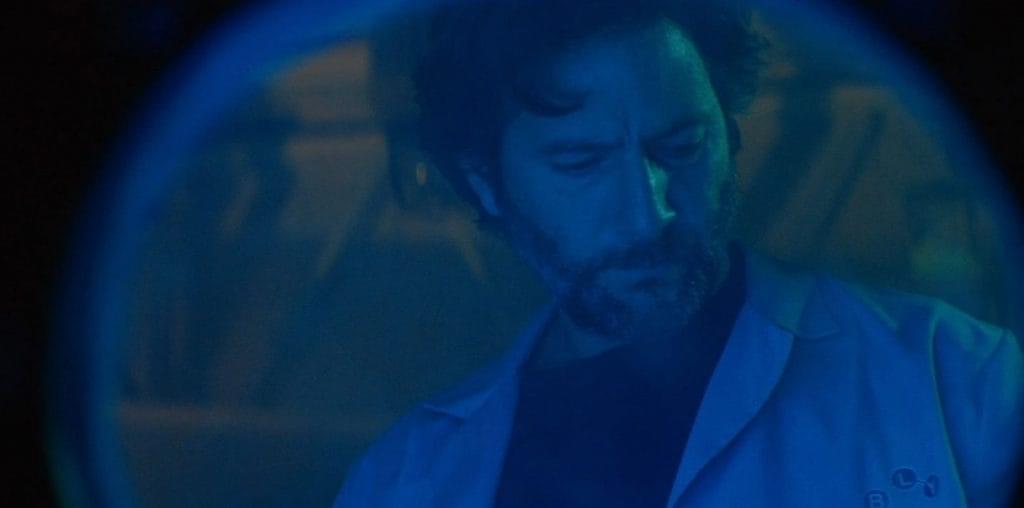
With the 2014 San Diego Comic-Con in full swing as I type this, “Diagram For Delinquents” is the perfect opportunity to revisit a dark period in the comic book industry, one that could have killed the medium thanks to a series of attacks far worse than anything ever leveled at music, movies, or other art forms. As this documentary illustrates, however, comic books proved to be far more resilient than many people could have imagined in the 1950s, when hysteria over crime and horror comics coincided with nationwide alarm over a perceived increase in juvenile delinquency.
Of course, as this film notes in the early going, how you define the idea of juvenile delinquency goes a long way toward determining whether there’s an upswing in it worth investigating. In those days of anti-communist fervor, however, it was much easier to imagine that there was a scourge infesting children’s brains right here at home, and since comics were seen as a primarily kiddie medium, there were few adults with any authority who were willing to stand up for the industry. As a result, publishers were browbeaten into adopting a code of standards so strict that one of the most popular companies, EC Comics, was forced to eliminate nearly its entire line of titles. (It only survived thanks to Mad, which converted from a comic to a magazine and became a cultural phenomenon.)
The heavy was a guy named Fredric Wertham, a German psychiatrist who immigrated to the US in the 1920s and who led a crusade against comic books in the late 1940s and early 1950s, decrying not only violent crime and horror comics but even declaring Superman a fascist fantasy and seeing Batman as a plot to turn kids gay. I admit that was pretty much all I ever knew about him until I watched this documentary, which does take pains to present a balanced view of a man who has long been a villain to generations of comic book fans.
For example, we learn that Wertham was actually pretty progressive in some ways: In the 1940s, he opened an integrated Harlem mental health clinic that served a black population whose members would have otherwise never been helped. And for the most part, he was genuinely interested in kids’ mental well-being, although he was an early proponent of the insidious practice of using therapy to turn gay teenagers into heterosexuals.
Late in his life, Wertham even took an interest in the comic book fanzines of the 1970s and wrote a book about their positive effects on fans of the medium. As comic book and TV writer Mark Evanier and others interviewed for this documentary note, he didn’t seem to understand the connection between those efforts and what he had done in the 1950s, and he was oblivious to the anger that many comic book fans still felt toward him.
However, none of those things make up for his tireless 1950s crusade against comic books that he felt were harming the nation’s children, despite the many dubious research methods that are detailed by interviewees in “Diagram For Delinquents.” For one thing, he saw comic books as a major influence on kids who had serious behavior problems, despite the fact that nearly all kids read them. And his theories about Superman and Batman were hysterically absurd, although I shudder to think how those ideas might be resurrected today by modern day crusaders, especially since the characters are more popular than ever.
Wertham gave many interviews on the subject and published a book called “Seduction of the Innocent,” gaining many allies along the way. When Senator Estes Kefavuer led sub-committee meetings into the comic book problem as part of his larger investigation into juvenile delinquency, he summoned not only Wertham to testify but also EC Comics publisher Bill Gaines, who appeared despite pleas not to from Al Feldstein, EC’s primary editor and writer, who also assumed art duties sometimes.
Gaines’ testimony was a disaster, and it served to frighten other publishers into adopting the Comics Code Authority, which was far stricter than the standards that the film industry had previously shouldered. Comics were completely sanitized in a movement that eventually culminated in the silly Batman TV series of the 1960s, although the ’70s and ’80s saw publishers finally pushing the envelope once more and doing away with the Code’s more restrictive rules. Today, the Code is finally dead — there’s an interesting little aside about how it operated during its last years in the 2000s.
While the damage from the 1950s still lingers today, comic books seem to finally be reaching a wider audience, thanks to the exploding popularity of superhero movies. And while that trend seems to have reinforced the idea that comic books can only feature superheroes, and thus are just for kids, hopefully some of the folks venturing into comic book shops for the first time will see that it’s a medium capable of the same range of stories as any other art form. There are many comics, such as Art Spiegelman’s harrowing Holocaust tale “Maus,” that are very much non-kid-friendly.
Overall, “Diagram For Delinquents” does a good job of thoroughly exploring its subject matter, giving us plenty of detail on the events of the 1940s and 1950s and putting them in a wider cultural context. However, it has an annoying tendency to punctuate important points by having words pop up in comic book-like captions with sound effects, which I found distracting. I can understand the importance of what’s being said without having the words thrown in my face, thank you very much. That only happens a few times, though.
The film is currently available as a digital download — for a few bucks more, you can also get an hour of bonus material, the centerpiece of which is the full interview with Al Feldstein. He was an important part of comic book history, thanks to his days at EC, and he served as editor of Mad during its most popular years, but he was never great at fan outreach and tended to be reclusive in retirement. That changed in the last few years of his life, though, as he began attending comic book conventions, and it’s great that he was able to talk about his entire career at great length before he passed away in April 2014. I highly recommend paying another three bucks just to see that interview.


Sounds fascinating, I was unaware of this man.